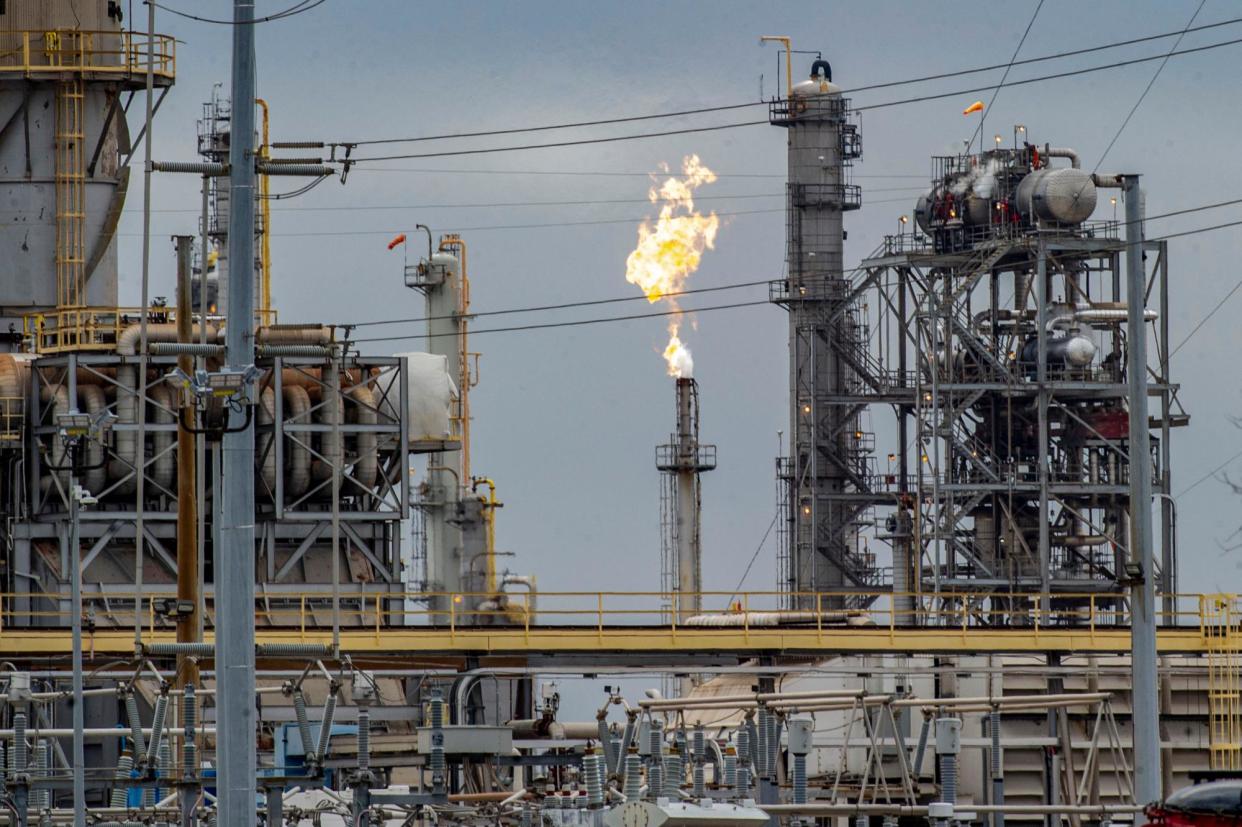New rule mandates 200 US plants to reduce toxic emissions linked to cancer

More than 200 of the US’s chemical plants will be mandated to reduce toxic emissions linked to cancer to and better protect communities from hazardous pollution, the Biden administration announced on Tuesday.
The long-awaited rule finalized by the Environmental Protection Agency (EPA) will strengthen protections for communities living near industrial sites, especially along the Gulf coast.
Related: A Florida neighborhood says an old factory made them sick. Now developers want to kick up toxic soil
The new update focuses on ethylene oxide, used to produce antifreeze, pesticides and sterilizing agents, as well as chloroprene, which is used to make synthetic rubber for shoes and wetsuits.
“President Biden believes every community in this country deserves to breathe clean air,” said the EPA administrator, Michael Regan, highlighting communities such as St John the Baptist parish in Louisiana. “We promised to listen to folks that are suffering from pollution and act to protect them. Today we deliver on that promise with strong final standards to slash pollution, reduce cancer risk and ensure cleaner air for nearby communities.”
The last time the government updated the pollution limits from chemical plants was 2006. The strengthened rule would lower toxic pollutants by 6,200 tons a year, and slash ethylene oxide and chloroprene emissions by 80%. The new update under the Clean Air Act would also require fence-line monitoring of six toxic air pollutants: ethylene oxide, chloroprene, vinyl chloride, benzene, 1,3-butadiene and ethylene dichloride.
“This shows the administration’s commitment to the issues of environmental justice,” said Adam Kron, a senior attorney with Earthjustice. “This rule will reduce a lot of hazardous air pollutants. There will be less cancer based on these emissions, there will be lives saved.”
The final rule requires manufacturers to improve efficiency of flares used to control pollution from emission sources, as well as better monitoring for leaks in tanks that store the chemicals.
Ethylene oxide emissions are more commonly found in the US than chloroprene, with dozens of facilities located across the country emitting the pollutant, which the EPA lists as a human carcinogen.
The new rule sets a threshold of 0.2 micrograms per cubic meter of average emissions before plant operators must take action. Facilities must meet the requirements for reducing ethylene oxide within two years, according to the EPA.
“We cannot have a healthy society without a healthy environment,” said Troy Carter, the congressman for Louisiana’s second district ahead of the signing of the rule today at the EPA headquarters in Washington DC. “ The most important commodity of any industry is its people and the communities that are in its proximity.”
There is only one facility in the US that produces the pollutant chloroprene, which is operated by the Japanese chemicals giant Denka and is situated in St John the Baptist parish in the heart of the heavily industrialised region in Louisiana known as “Cancer Alley”.
The EPA lists chloroprene as a likely human carcinogen and has long suggested a safe lifetime exposure limit of 0.2 micrograms per cubic metre. The agency has been monitoring the air around the Denka facility since 2016 and readings have regularly exceeded this limit by dozens of times.
The new chloroprene rule sets two “action levels” of 0.8 and 0.3 micrograms per cubic meter of average concentration at fence-line monitoring sites, which would require the facility to reduce emissions if they are exceeded. The EPA also plans to execute its chloroprene rule at an expedited speed, by requiring its implementation within 90 days.
The rule was met with a mixed response by some experts working with the majority-Black communities affected by chloroprene pollution in the region.
“Shortening the implementation timeframes is a positive aspect,” said the environmental scientist Wilma Subra. “But the reductions in emission concentration is not nearly enough to protect the community.”
Sharon Lavigne, the founder and executive director of Louisiana advocacy group Rise St James said they would look forward to the pollution reduction required in the new rule. “This is environmental racism that we fight against. We work to stop industrial expansion and clean up our air, and demand reparations for people harmed by industrial pollution.”
Lavigne has been a leading a fight against the proposed Formosa Plastics chemical complex to be built in Cancer Alley. Earlier this year, a Louisiana appellate court upheld air permits for construction, allowing the plant to go forth and authorizing emissions of more than 800 tons of toxic pollutants annually, including estimated 15,400lb of ethylene oxide.
Denka, a Japanese company that bought the former DuPont rubber-making plant in 2015, said it “vehemently opposes” the EPA’s latest action and accused the agency of pursuing an “ill-founded, politicized approach to regulating chloroprene emissions”. A statement added that swift implementation of the rule would force the company to “idle its operations”. Denka planned to pursue litigation on the issue, the statement said.


